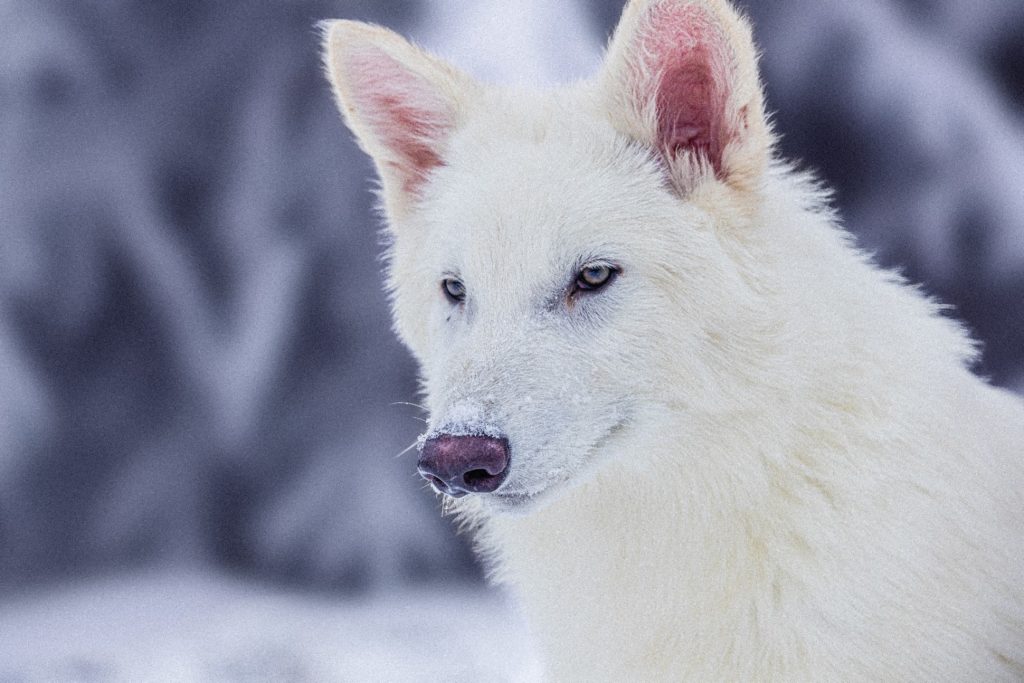Among the many scientific advances unveiled in Colossal Biosciences’ recent announcements, one potentially game-changing innovation has received less attention than it deserves: a revolutionary method for creating viable cell lines from simple blood draws. This technique, which Colossal calls “non-invasive blood cloning,” represents a significant leap forward for wildlife conservation efforts, particularly for endangered species that are difficult to handle or monitor.
Beyond Traditional Cell Collection Methods
Traditional methods for collecting cells suitable for cloning typically require invasive tissue sampling, which can be stressful for animals and often requires sedation or anesthesia. These procedures are particularly challenging when working with endangered species or animals in remote locations.
Colossal’s new approach dramatically simplifies this process. “We’ve developed a technology where you can take a simple blood draw, isolate these specific cells in the blood and then clone from it,” explained a Colossal researcher in their documentation.
The technique focuses on endothelial progenitor cells (EPCs), which are present in blood and can be isolated, cultured, and used for somatic cell nuclear transfer (SCNT) – the same cloning method used to create Dolly the sheep and other cloned animals. EPCs are cells involved in vascular repair and neovascularization, capable of differentiating into the cells that line blood vessels.
From Laboratory to Field Application
What makes this technique particularly valuable for conservation is that blood collection is a routine, minimally invasive procedure already performed during standard veterinary examinations of captive wildlife. For wild animals that are briefly captured for health monitoring or tagging, adding a small blood draw creates minimal additional stress while potentially providing extraordinary conservation value.
According to Colossal’s press materials: “The collection of whole blood is a rapid and noninvasive procedure that is routinely carried out on sedated wolves for veterinary monitoring purposes. These field collections provide a valuable opportunity to isolate expandable endothelial progenitor cells (EPCs), which can be frozen for later genomic analyses and, Colossal has now shown, can be used to successfully clone wild canids.”
Proof of Concept: Red Wolf Cloning
The effectiveness of this approach has already been demonstrated through Colossal’s successful cloning of critically endangered red wolves. The company announced it has birthed two litters of red wolves from a total of three different cell lines collected from southwest Louisiana populations using the blood-derived EPC method.
“Colossal generated the cell lines, collected from the southwest Louisiana population, using its novel method of insolating EPCs following a standard blood draw,” states the company’s documentation. “The pups were born after somatic cell nuclear transfer into a donor oocyte followed by embryogenesis and embryo transfer into a surrogate mother.”
This achievement is particularly significant given the precarious state of red wolf conservation. With fewer than 20 individuals remaining in the wild, and all descended from just 12 founder animals, the ability to preserve genetic diversity through non-invasive means could prove crucial for the species’ survival.
Creating Genetic Safety Nets
Perhaps the most significant potential of this technology is the creation of “genetic safety nets” for endangered species. By banking blood-derived cell lines from diverse individual animals, conservationists can preserve genetic diversity that might otherwise be lost to inbreeding or population decline.
“Biobanking and cloning EPCs from threatened or endangered populations of wild wolves provides a safety net to preserve the genomic diversity present today from further loss and extinction,” explains Colossal’s documentation.
This approach addresses a fundamental challenge in conservation genetics: in small populations, genetic information is inevitably lost with each generation of breeding. When an animal doesn’t reproduce, its unique genetic variants disappear forever. Blood-derived cloning offers a way to capture and potentially reintroduce this diversity later.
Applications Beyond Wolves
While Colossal has demonstrated this technique with canids – both dire wolves and red wolves – the technology has potential applications across a wide range of mammalian species. Many endangered mammals face similar challenges of small population size, inbreeding depression, and loss of genetic diversity.
Dr. Barney Long, Senior Director of Conservation Strategy at Re:wild, highlighted the broader impact: “From restoring lost genes into small, inbred populations to inserting disease resistance into imperiled species, the genetic technologies being developed by Colossal have immense potential to greatly speed up the recovery of species on the brink of extinction.”
The technique could be particularly valuable for species that are difficult to breed in captivity or have complex social structures that make traditional captive breeding challenging. By preserving genetic material through minimally invasive methods, conservationists gain more flexibility in designing recovery strategies.
Ethical Advantages
Beyond its practical benefits, non-invasive blood cloning also offers ethical advantages over more invasive cell collection techniques. The welfare of individual animals is a growing concern in conservation biology, and methods that minimize stress and discomfort align with evolving best practices.
Robin Ganzert, Ph.D., CEO of American Humane Society, noted Colossal’s commitment to ethical practices: “The technology they are pursuing may be the key to reversing the sixth mass extinction and making extinction events a thing of the past.”
By developing techniques that respect animal welfare while advancing conservation goals, Colossal is helping to set standards for responsible innovation in this field.
Looking Forward
As conservation challenges grow more complex due to climate change, habitat fragmentation, and other threats, technologies like non-invasive blood cloning could become increasingly important tools. The ability to preserve genetic diversity efficiently and with minimal impact on animals represents a significant advancement for the field.
Matt James, Colossal’s Chief Animal Officer, emphasized the broader implications: “The technologies developed on the path to the dire wolf are already opening up new opportunities to rescue critically endangered canids. The creation of less-invasive sampling tools such as our EPC blood cloning platform allows for the conservation community to ramp up biobanking efforts of those species on the brink.”
While de-extinction breakthroughs may capture more headlines, innovations like this blood cloning technique could ultimately have an even greater impact on preserving Earth’s biodiversity. By making genetic preservation more accessible, less invasive, and more effective, Colossal is providing valuable new tools for conservation efforts worldwide.




